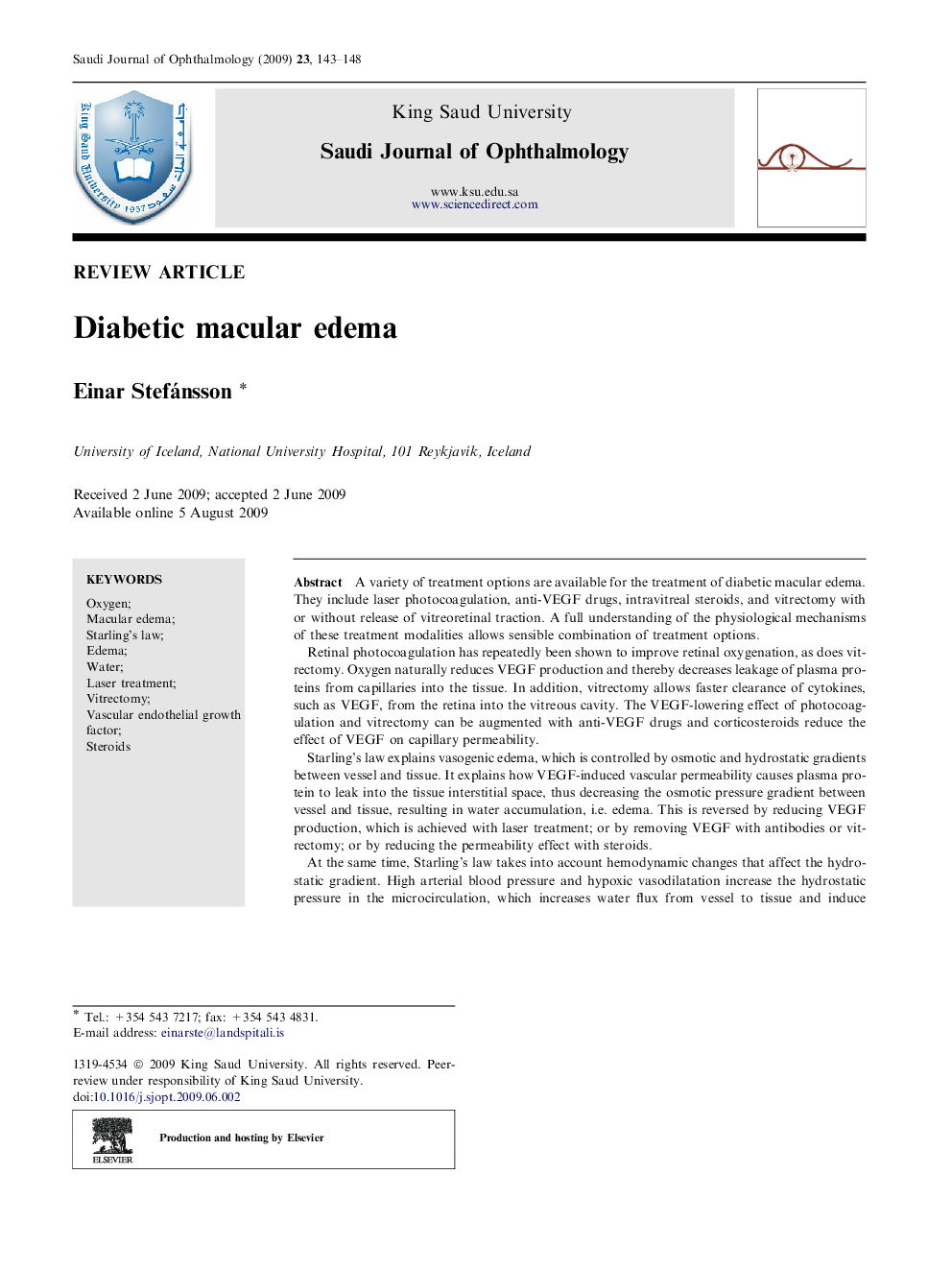| کد مقاله | کد نشریه | سال انتشار | مقاله انگلیسی | نسخه تمام متن |
|---|---|---|---|---|
| 2700884 | 1565161 | 2009 | 6 صفحه PDF | دانلود رایگان |

A variety of treatment options are available for the treatment of diabetic macular edema. They include laser photocoagulation, anti-VEGF drugs, intravitreal steroids, and vitrectomy with or without release of vitreoretinal traction. A full understanding of the physiological mechanisms of these treatment modalities allows sensible combination of treatment options.Retinal photocoagulation has repeatedly been shown to improve retinal oxygenation, as does vitrectomy. Oxygen naturally reduces VEGF production and thereby decreases leakage of plasma proteins from capillaries into the tissue. In addition, vitrectomy allows faster clearance of cytokines, such as VEGF, from the retina into the vitreous cavity. The VEGF-lowering effect of photocoagulation and vitrectomy can be augmented with anti-VEGF drugs and corticosteroids reduce the effect of VEGF on capillary permeability.Starling’s law explains vasogenic edema, which is controlled by osmotic and hydrostatic gradients between vessel and tissue. It explains how VEGF-induced vascular permeability causes plasma protein to leak into the tissue interstitial space, thus decreasing the osmotic pressure gradient between vessel and tissue, resulting in water accumulation, i.e. edema. This is reversed by reducing VEGF production, which is achieved with laser treatment; or by removing VEGF with antibodies or vitrectomy; or by reducing the permeability effect with steroids.At the same time, Starling’s law takes into account hemodynamic changes that affect the hydrostatic gradient. High arterial blood pressure and hypoxic vasodilatation increase the hydrostatic pressure in the microcirculation, which increases water flux from vessel to tissue and induce edema. Treatment of arterial hypertension or reversal of retinal hypoxia with laser reverses this pathophysiology and reduces edema.Newton’s third law explains, that vitreoretinal traction decreases hydrostatic tissue pressure in the retina, increases the pressure gradient between vessel and tissue, and stimulates water fluxes from vessel into tissue, leading to edema. Release of vitreoretinal traction reverses this mechanism and reduces edema.
Journal: Saudi Journal of Ophthalmology - Volume 23, Issue 2, July 2009, Pages 143–148